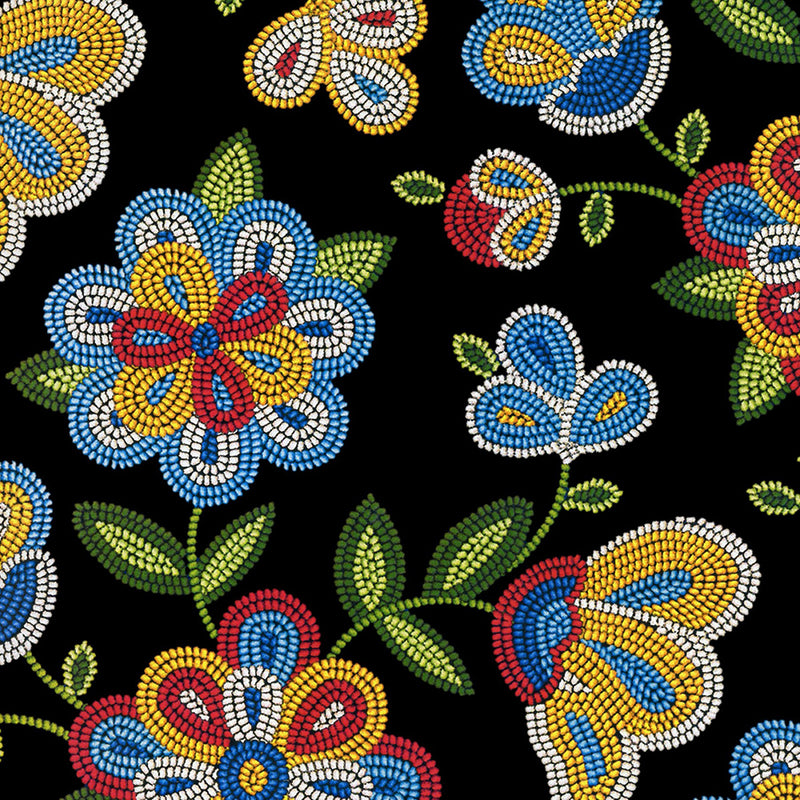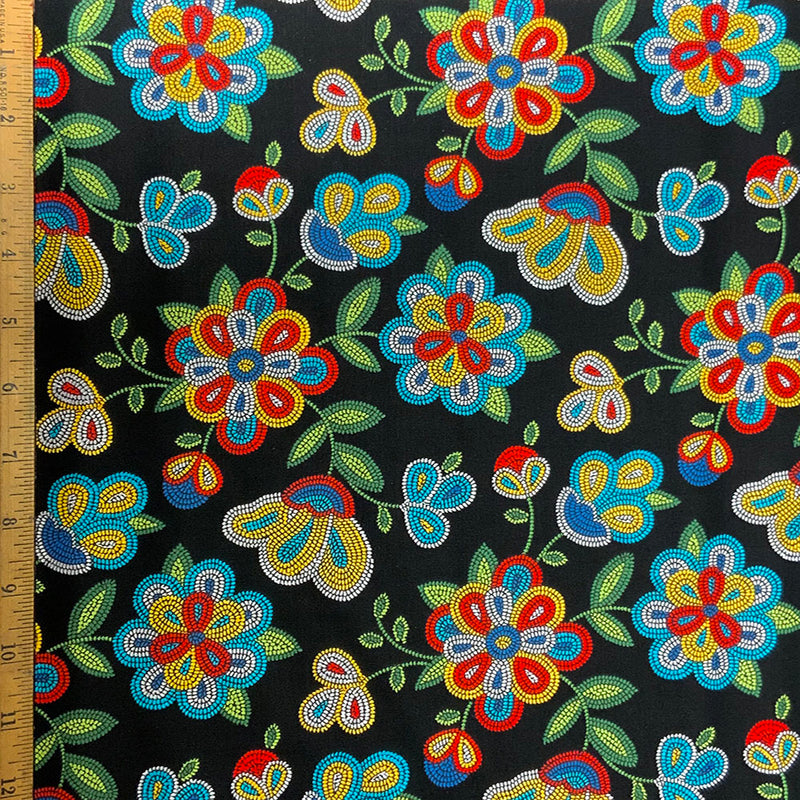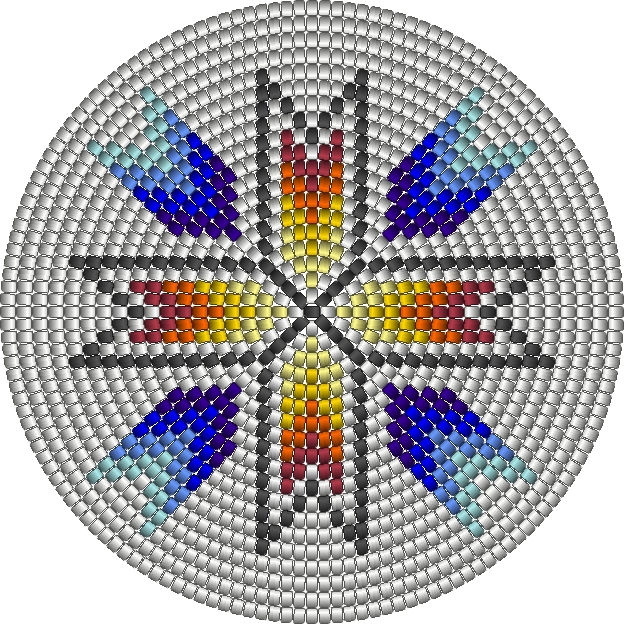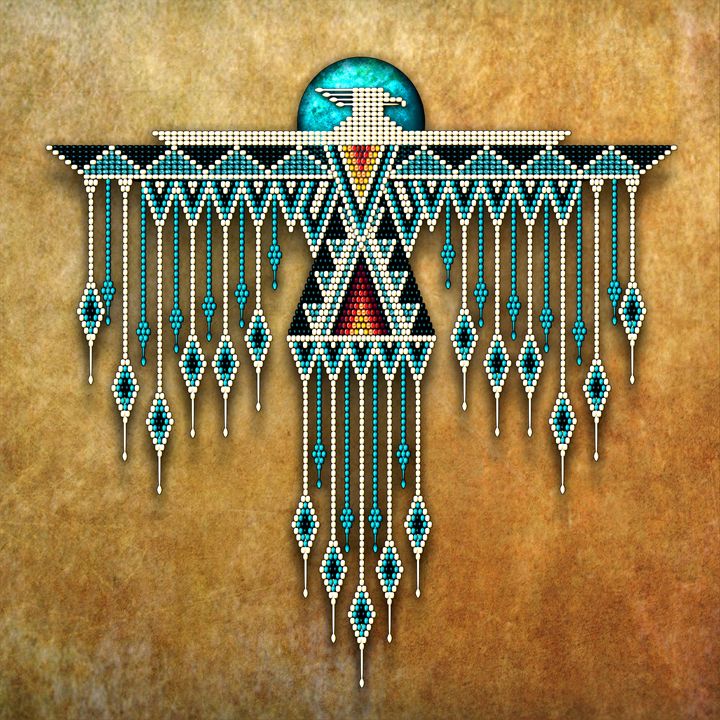The History of Native American Beadwork
The tradition of beading patterns in Native American cultures spans centuries. It’s a form of art steeped in history and significance. Native American beadwork began with the use of natural items such as bones, shells, and stones. These materials were readily available and served as the earliest beads. With time, Native Americans incorporated beads made of glass, metal, and other materials obtained through trade.
Beadwork evolved into a way to tell stories, signify status, and represent tribal identities. Different tribes developed unique beading techniques and styles. The introduction of European glass beads during the 15th century revolutionized Native American beading. Small, colorful glass beads, known as seed beads, allowed for more intricate and delicate designs.
As tribes encountered one another and Europeans, they exchanged ideas and motifs. This led to a blending of styles and the emergence of new beading patterns. Despite the influence of trade and interaction, many tribes maintained signature designs that held cultural and spiritual importance. Native American beadwork continues to be a powerful expression of heritage and identity, preserved through generations.

Traditional Patterns and Their Meanings
Native American beadwork is more than decorative. Each pattern carries deep meanings. Tribes use symbols and colors to tell stories and express beliefs. For example, the Lakota tribe use the circle pattern to represent unity and the cycle of life. Navajos often feature the diamond shape symbolizing the four sacred mountains.
Understanding Symbolism
Symbols in beadwork vary across tribes. Some common symbols include animals, nature elements, and celestial bodies. For instance, turtles may stand for longevity, while eagles can symbolize strength. Colors also have significance, with white often meaning purity, red for life or war, and black for the afterlife or rebirth.
Specific Tribal Patterns
Distinct tribal patterns showcase each community’s identity. The Hopi are known for their precise geometric designs, while the Iroquois excel in floral patterns that have been passed down through generations. These motifs are important cultural markers that distinguish one group from another.
Patterns and meanings in Native American beadwork hold important cultural value. They convey history, values, and identity through art. It is essential to understand and respect these meanings when appreciating this craft.
Materials and Techniques Used in Native American Beading
Native American beading uses a variety of materials beyond the initial bones, shells, and stones. With trade, glass and metal beads became staples in these intricate designs. Beaders today might also use synthetic materials that offer durability and a wide color range.
Traditionally, sinew was the thread of choice for threading beads. Derived from animal tendons, it is strong and durable. Modern beaders may opt for nylon or other synthetic threads. These are less authentic but provide longevity to the artwork.
The techniques employed in beading patterns native american artistry vary. The peyote stitch is popular among many tribes. It creates a seamless bead fabric with an almost woven appearance. The lazy stitch is another method. It involves sewing beads in rows onto a backing material, like leather or cloth. Loom weaving is also prevalent, especially for belts and sashes. It allows for complex, detailed patterns to emerge with precision.
The brick stitch is a technique used to create intricate earrings and edgings. It gives a staggered yet strong structural finish. Applique is a widely-practiced method as well. Beaders stitch beads directly onto leather or fabric, creating shapes and designs.
In using these materials and techniques, each piece of beadwork is unique. Artisans leave their mark through their craftsmanship. This preserves cultural narratives and showcases individual artistry within this longstanding tradition.

Contemporary Beadwork and Modern Interpretations
Native American beadwork has not only preserved its historical roots but also evolved with modern times. Artists today blend traditional techniques with contemporary designs, creating unique pieces that reflect present-day creativity while honoring the past.
Modern interpretations of beading patterns native american art often feature current themes. Pop culture, social movements, and personal stories intertwine with traditional symbols. This fusion results in beadwork that resonates with both indigenous and non-indigenous audiences.
Artisans experiment with novel materials. They use recycled elements, plastic beads, and non-traditional fabrics. These materials broaden the range of possibilities and textures available to beadworkers.
Technology plays a role in modern beading as well. Computer-aided design programs help in planning intricate patterns. Yet, the handcrafted essence of the beadwork remains central to its value. Techniques like the peyote stitch and brick stitch continue to be vital, but now often incorporate these new materials.
Contemporary bead artists often showcase their work in galleries and online platforms. This exposure provides a wider audience for Native American beadwork. It also stimulates dialogue about cultural significance and heritage preservation.
In reconciling past and present, today’s beading patterns native american artisans ensure the tradition’s future. They demonstrate that cultural expressions can honor their origins while embracing change and innovation.
The Cultural Significance of Bead Patterns in Native Communities
The bead patterns in Native American art are not just adornments. They are a rich tapestry of cultural legacy, steeped in meaning and community importance. These designs are often tied to specific events, stories, or teachings within a tribe. They serve as both a creative expression and a tool for passing down traditions.
In many indigenous communities, bead patterns are vital for cultural identity. They can indicate a person’s tribal affiliation, social status, and accomplishments. Certain patterns or colors might be worn exclusively by leaders or during ceremonies. This deep significance underlines the respect and reverence given to beadwork.
Moreover, bead patterns are a form of historical record. Through these designs, Native American artists preserve their ancestors’ legacies and worldviews. The continuity of traditional patterns ensures that the wisdom of past generations endures. In this light, each bead woven into a pattern is a note in the symphony of tribal history.
Today, Native communities often use beadwork to assert and celebrate their heritage, especially in the face of a changing world. Many tribes hold workshops and classes to teach the young these intricate beading techniques. This keeps the knowledge alive and relevant for future generations. It reinforces the idea that beading patterns are more than just art—they are a living, breathing aspect of Native American identity.
In summary, the intricate beading patterns of Native American communities embody deep cultural significance. They are a bridge between the past and the present, an emblem of identity, and a vessel for cultural endurance. Recognizing their value is essential in appreciating the rich tapestry of Native American culture and art.

Key Influences and Styles Across Different Tribes
The beadwork of Native American tribes is diverse, each with its unique influences and styles. Across the various tribes, the use of beading patterns native american art holds significant distinction.
The Sioux and Their Use of Quillwork
Before glass beads grew popular, the Sioux were masters of quillwork. They would soften and dye porcupine quills, then weave them into stunning designs. The Sioux’s transition to beads kept the same intricate patterns but added new colors and dimensions.
Navajo beadwork is bold and often includes large, colorful designs. Their patterns commonly feature the natural world, with elements like the sun, moon, and stars taking center stage.
The Iroquois and Raised Beading Techniques
The Iroquois are famed for their raised beading techniques, creating a 3D effect on their works. Their beadwork often includes intricate floral motifs that symbolize their close connection with nature.
The Cherokee and Incorporation of Seeds and Shells
The Cherokee incorporated seeds and shells into their beadwork, along with glass beads. They used these materials to create complex geometric patterns.
The Influence of Trade on Beading Patterns
Trade with Europeans brought new materials and ideas that influenced tribal styles. Tribes adopted glass beads and integrated them with existing symbols, adding vibrancy to their traditional patterns.
Maintaining Cultural Tradition in Beadwork
Despite these influences, many tribes hold fast to their traditional styles. These styles honor their history and ensure that their cultural narratives continue. Together, the various styles and patterns from different tribes create a mosaic of Native American identity.
Beading patterns native american art remain a key cultural element in tribal identities. Recognizing and understanding the distinct influences and styles is crucial to appreciating the rich diversity of Native American beadwork.
How to Preserve and Collect Native American Beaded Artifacts
Preserving and collecting Native American beaded artifacts respects their cultural importance. To maintain their condition, consider these pointers:
- Store in Stable Conditions: Keep beadwork in cool, dry places away from direct sunlight. Extreme temperatures and moisture can damage beads and threading material.
- Handle with Care: Always handle beaded artifacts with clean hands. Oils and dirt can degrade the materials. Use soft gloves if possible.
- Display Safely: When displaying beadwork, ensure it’s not under tension. Framing should involve acid-free materials and UV-protective glass.
- Avoid Chemicals: Never use harsh chemicals or cleaners. Dust gently with a soft brush or use a mild, water-based cleaner if necessary.
- Regular Checks: Inspect your collection periodically for signs of wear or pest damage. Early detection can prevent further deterioration.
- Consult Professionals: For repair or restoration, seek professionals experienced in handling Native American artifacts.
- Document Provenance: Keep detailed records of each piece’s history and acquisition. This adds value and aids in cultural preservation.
By following these guidelines, collectors can ensure that the beauty and cultural significance of beading patterns Native American art endure for generations to come. These artifacts connect us to a rich heritage and deserve our utmost care and respect.
Ways to Learn and Practice Native American Beading
For those interested in the rich heritage of beading patterns native american culture offers, learning and practicing this art is a fulfilling endeavor. Here are some steps and resources to begin your journey into Native American beading.
- Research and Read: Start with books and online articles. Learn about different tribes and their beading styles.
- Visit Museums and Exhibits: Seeing actual beadwork can inspire and inform your own practice.
- Take Workshops or Classes: Look for local craft stores or cultural centers that offer beading classes.
- Online Tutorials and Videos: There are plenty of step-by-step guides and videos online for various techniques.
- Join Beading Communities: Online forums and local clubs can provide support and shared knowledge.
- Practice: Start with simple patterns and gradually work on more complex designs.
- Respect Traditions: Understand the meanings behind patterns and respect cultural significance.
- Purchase Supplies: Support Native American businesses by buying authentic materials when possible.
By engaging in these activities, you begin to appreciate the meticulous skill involved in creating beading patterns native american artisans are known for. Remember, practice is key to honing your beading skills while respecting the roots of this art form is crucial for cultural appreciation.
